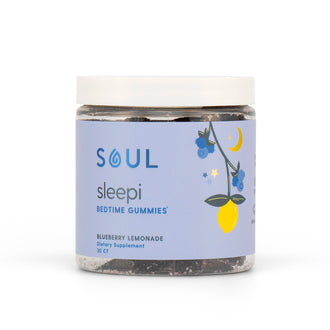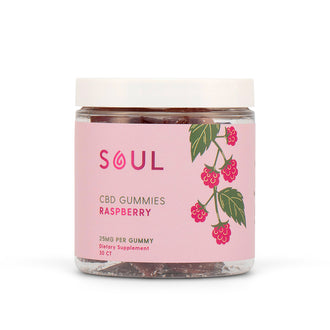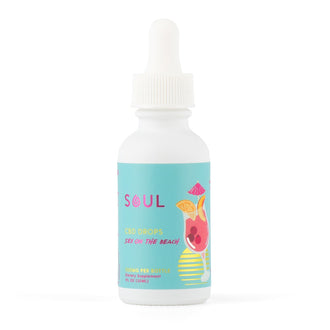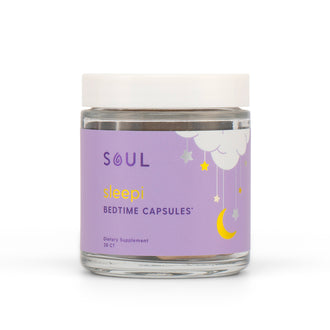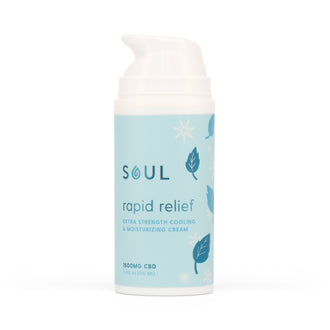
Key Takeaways:
- Types of CBD: Understanding the difference between full-spectrum, broad-spectrum, and isolate CBD oils is crucial for selecting the right product for pain relief.
- Dosage and Application: Finding the correct dosage and the most effective method of application can significantly influence the effectiveness of CBD oil for pain management.
- Legal and Safety Considerations: Being aware of the legal status of CBD oil in your region and consulting with a healthcare provider before use can help ensure a safe and compliant approach to using CBD oil for pain.
CBD oil has gained popularity as a natural pain relief solution in recent years. People are increasingly looking for holistic ways to lessen pain without relying on traditional medicines. CBD, a compound found in the cannabis plant, offers pain relief without the high that comes from THC, another cannabis compound. This guide offers tips on choosing high-quality CBD oil and using it effectively for pain management, highlighting CBD oil's potential in offering a natural alternative for those seeking to alleviate pain.
Discover the purest expression of wellness with Soul CBD Oil Drops, your go-to solution for daily calm, recovery, and sleep. Choose your strength and flavor for personalized relief. Experience the difference today with just a few drops.
Begin Your Journey Of Transformation With Soul
Eager for a Refresh? Step into the World of SOUL – Your Gateway to Comprehensive Well-being Awaits! |
Understanding CBD Oil
CBD oil, made from a compound called cannabidiol found in cannabis and hemp plants, doesn't get you high like THC, another compound from the same plants. Instead, CBD is valued for its potential to reduce inflammation, pain, and anxiety. To make CBD oil, CBD is extracted and mixed with a carrier oil such as coconut or hemp seed oil. It's available in different types: full-spectrum, which has all cannabis plant compounds including a bit of THC; broad-spectrum, which has various compounds but no THC; and isolate, which is pure CBD. The choice among these depends on personal preference and local THC laws. Full and broad-spectrum versions may offer the "entourage effect," suggesting CBD might work better alongside other compounds from the cannabis plant.
How does CBD Oil Help for Pain
CBD oil helps manage pain by interacting with the body's endocannabinoid system (ECS), which controls pain, immune responses, and inflammation. It's thought to boost the production of endocannabinoids, reducing pain and inflammation, and also affects serotonin receptors, which helps with mood and pain perception. This makes CBD oil useful for physical pain and conditions with a psychological aspect, like anxiety. It has shown benefits for various pains, including chronic, nerve-related, and inflammatory pain, especially useful for arthritis and multiple sclerosis due to its anti-inflammatory properties. However, its effectiveness can vary based on the type of pain, dosage, and individual differences.
Factors to Consider When Choosing CBD Oil for Pain
Selecting the right CBD oil for pain management requires consideration of several key factors. Understanding these elements can guide you to a product that best suits your needs and enhances your chances of achieving pain relief.
Type of CBD
As mentioned earlier, CBD oil comes in full-spectrum, broad-spectrum, and isolate forms. Full-spectrum may offer the entourage effect but contains THC, which might not be preferred or legal in all areas. Broad-spectrum and isolates are good options for those looking to avoid THC.
Concentration
CBD oil products vary greatly in concentration. Higher concentrations may offer more pronounced effects but start with a lower dose and gradually increase to find what works best for you.
Purity and Quality
Look for products that have been third-party tested, which ensures the oil's purity and potency. Reputable brands will provide Certificates of Analysis (CoA) for their products, detailing the presence of CBD, THC, and any contaminants.
Source of Hemp
The quality of CBD oil is directly tied to the quality of the hemp it was extracted from. Hemp plants that are grown organically and in regulated environments are less likely to contain harmful pesticides or chemicals.
Extraction Method
The method used to extract CBD oil from hemp can affect its quality. CO2 extraction is widely considered the gold standard as it preserves the purity of the CBD without the use of solvents or heat.
Brand Reputation and Reviews
Research brands and read customer reviews to gauge the effectiveness of their products and customer service experience. A strong positive reputation in the community can be a good indicator of product quality.
Different Ways to Use CBD Oil for Pain
CBD oil offers versatility in application methods, catering to different preferences and requirements. Here are some of the most common ways to use CBD oil for pain management:
Oral Consumption
One of the simplest methods is to consume CBD oil directly. Placing drops under the tongue (sublingually) allows for faster absorption into the bloodstream. CBD capsules and edibles are also popular for their ease of use and consistent dosing, though they may take longer to take effect due to digestion.
Topicals
For localized pain, such as joint pain or muscle soreness, CBD-infused topicals like creams, gels, and balms can be applied directly to the skin. This method allows the CBD to interact with cannabinoid receptors in the affected area without entering the bloodstream, providing targeted relief.
Vaping or Smoking
Inhalation is the quickest way to experience effects as it allows CBD to enter directly into the bloodstream through the lungs. However, this method may not be suitable for everyone, especially those with respiratory issues or concerns about the health risks associated with vaping.
Tinctures and Sprays
Similar to oral consumption, tinctures and sprays are applied under the tongue for quick absorption. They offer the advantage of precise dosing and the ability to adjust the dosage as needed.
Bath Bombs and Soaks
Incorporating CBD into bath bombs and soaks provides a relaxing way to absorb CBD through the skin, ideal for overall body relief and relaxation.
The Legal Landscape of CBD Oil
Navigating the legal landscape of CBD oil can be complex, as laws vary significantly by country, state, and even local jurisdictions. Generally, the legality of CBD hinges on several factors, including its source, THC content, and intended use.
In the United States, the 2018 Farm Bill federally legalized hemp-derived CBD products containing less than 0.3% THC. However, some states have their own rules that either align with or deviate from federal law, making it crucial for consumers to familiarize themselves with local regulations.
Globally, the legal status of CBD varies widely. In some countries, CBD is fully legal and available over the counter, while in others, it remains strictly regulated or outright banned. The distinction often lies in whether the CBD is derived from hemp (low THC content) or marijuana (high THC content), with hemp-derived CBD more likely to be legal.
For those considering CBD oil for pain management, it's essential to:
- Check Local Laws: Before purchasing or using CBD oil, verify its legal status in your area.
- Choose Hemp-Derived CBD: Opt for hemp-derived CBD products to comply with most legal frameworks, especially in jurisdictions where marijuana is illegal.
- Be Cautious When Traveling: Laws can differ significantly from one place to another, so it's important to research the laws of your destination if you plan to travel with CBD oil.
Staying informed about the evolving legal landscape of CBD oil ensures that you remain compliant with local laws while exploring its potential for pain management.
Final Thoughts
Finding the right CBD oil for pain means learning about the product, knowing your needs, and understanding legal issues. It's important to choose the right type, concentration, purity, and how you use it, while also keeping up with the law in your area. As more people turn to CBD oil for its potential health benefits, being informed and cautious is key. Talking to healthcare providers and trying out different products and doses might be part of your journey. With a careful approach, CBD oil can be an effective, natural option for pain relief and a boost to your well-being.
Not sure which CBD product is right for you? Take our quick quiz and discover your perfect wellness match today. Start your personalized journey to well-being now.
Read Also:
- CBD Gummies For Sex: Enhance Intimacy Naturally
- Shedding Light on CBT and Its Place In The Cannabinoid Spectrum
- THC-O vs Delta 8: Potency and Therapeutic Potential
Frequently Asked Questions
Is CBD oil safe to use for pain relief?
Yes, CBD oil is considered safe for most people. However, it can cause side effects such as drowsiness, dry mouth, and changes in appetite for some. It's important to consult with a healthcare provider before starting any new supplement, including CBD oil, especially if you have existing health conditions or are taking other medications.
Can CBD oil be used to treat all types of pain?
CBD oil has been found to be effective in managing various types of pain, including chronic pain, neuropathic pain, and inflammatory pain. However, its effectiveness can vary depending on the individual and the cause of pain.
How quickly can I expect to feel relief after using CBD oil?
The onset of relief depends on the method of consumption. Sublingual (under the tongue) application can produce effects within 15 to 45 minutes, while topicals can take a similar time frame to feel the effects locally. Edibles and capsules may take longer due to the digestion process.
Will using CBD oil for pain show up on a drug test?
Pure CBD isolate should not show up on a drug test, but full-spectrum CBD oil contains trace amounts of THC, which might result in a positive test depending on the sensitivity of the test and the amount of CBD oil consumed.
How do I determine the right dosage of CBD oil for pain relief?
Start with a low dose and gradually increase it until you find relief. The optimal dose varies depending on the individual, the type of pain, and the concentration of CBD in the product. Consultation with a healthcare provider can also help determine an appropriate starting dose.
Can CBD oil be used in conjunction with other pain management treatments?
Yes, CBD oil can be used alongside other treatments, but it's important to consult with a healthcare professional to avoid potential interactions with other medications.
Are there any people who should avoid using CBD oil for pain?
Pregnant or breastfeeding women and people with certain medical conditions should avoid using CBD oil unless advised otherwise by a healthcare professional.
How long can I use CBD oil for pain management?
There is no set limit for how long CBD oil can be used for pain management. It can be used as long as it provides relief and does not cause significant side effects.
Can CBD oil cure my condition?
CBD oil is not a cure for any condition but can be used to manage symptoms such as pain. It's important to consult with a healthcare provider for proper diagnosis and treatment of any medical conditions.
Is there any scientific evidence supporting the use of CBD oil for pain?
Yes, there is growing scientific evidence supporting the use of CBD oil for pain, particularly for conditions like chronic pain, arthritis, and multiple sclerosis. However, more research is needed to fully understand its effectiveness and mechanisms.
Sources:
- CBD oil for pain management: Effects, benefits, and uses. (2020, October 20). Www.medicalnewstoday.com. https://www.medicalnewstoday.com/articles/319475
- Grogan, G., Stephens, K., Chou, J., Timko, M. P., Cottler, P., & DeGeorge, B. R. J. (2023). The Mechanism of Cannabichromene and Cannabidiol Alone Versus in Combination in the Alleviation of Arthritis-Related Inflammation. Annals of Plastic Surgery, 90(6S), S408. https://doi.org/10.1097/SAP.0000000000003547
- CBD for arthritis pain: Benefits, use, and side effects. (2020, October 21). Www.medicalnewstoday.com. https://www.medicalnewstoday.com/articles/319796
- Jurga Bernatoniene, Arūnas Ščiupokas, Kopustinskiene, D. M., & Kęstutis Petrikonis. (2023). Novel Drug Targets and Emerging Pharmacotherapies in Neuropathic Pain. Pharmaceutics, 15(7), 1799–1799. https://doi.org/10.3390/pharmaceutics15071799
- Does CBD oil work for migraine? Benefits and risks. (2018, August 6). Www.medicalnewstoday.com. https://www.medicalnewstoday.com/articles/321653
- Isenmann, E., Veit, S., Starke, L., Flenker, U., & Diel, P. (2021). Effects of Cannabidiol Supplementation on Skeletal Muscle Regeneration after Intensive Resistance Training. Nutrients, 13(9), 3028. https://doi.org/10.3390/nu13093028


